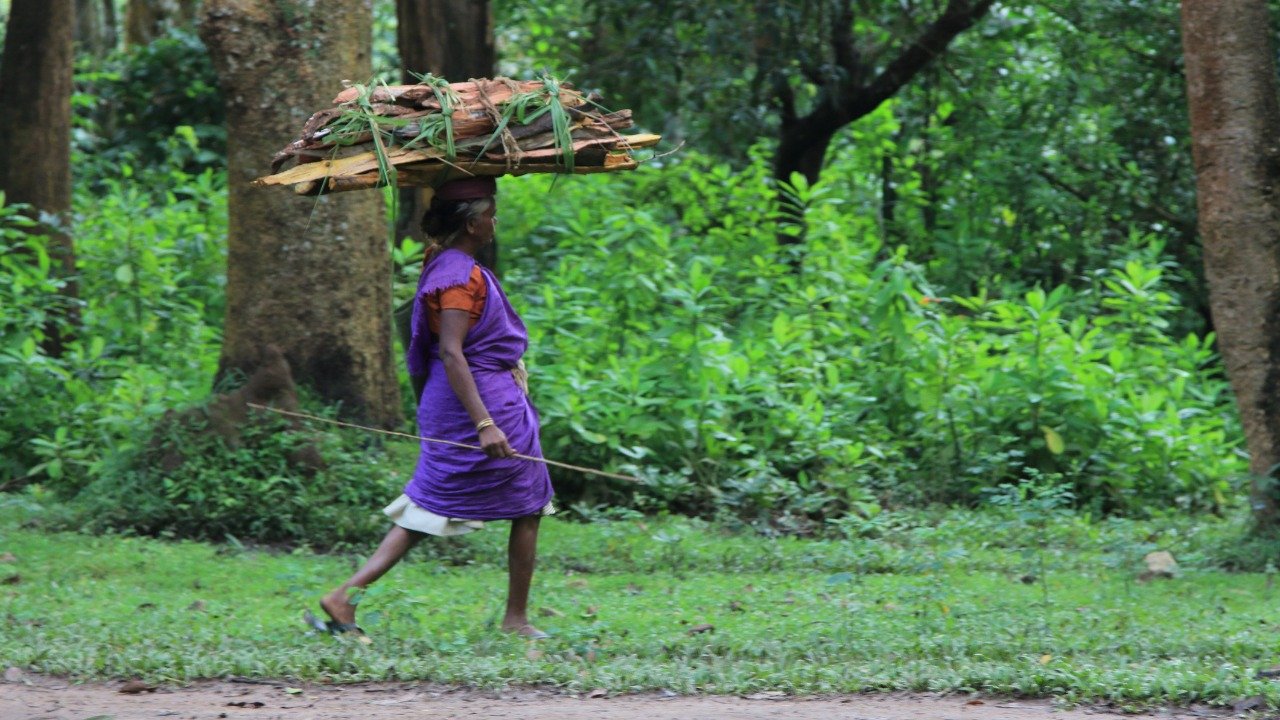 A report prepared by the Forest Survey of India (FSI) points to the loss of forest cover in the Northeast. Experts says the loss is of great concern as the Northeastern states are repositories of great biodiversity
A report prepared by the Forest Survey of India (FSI) points to the loss of forest cover in the Northeast. Experts says the loss is of great concern as the Northeastern states are repositories of great biodiversity
The UN International Day of Forests falls on March 21, 2022 and its theme is “Forests and sustainable production and consumption.” It is time to analyze the latest report released during January 2022 titled ‘India State of Forest Report 2021’ prepared by the Forest Survey of India (FSI). The report throws a challenge to check a decline in the Northeast and degradation of natural forests though it has found the country’s forest cover has increased by 1,540 sq km since 2019.
Experts say that this loss is of great concern as the Northeastern states are repositories of great biodiversity. While natural calamities may have led to much of the loss, the declining forests will in turn increase the impact of landslides, they say. It will also impact water catchment in the region, which is already seeing degradation of its water resources. Unlike other states, where forests are clearly managed by the forest department and state governments, the Northeastern states follow a different ownership pattern —
community ownership and protected tribal land – which makes conservation activities challenging.
The total forest and tree cover of the country is 80.9 million hectares which is 24.62 percent of the geographical area of the country. As compared to the assessment of 2019, there is an increase of 2,261 sq km in the total forest and tree cover of the country. The report reveals that 17 states and UTs have above 33 percent of the geographical area under forest cover.
The ISFR-2021 provides information on forest cover, tree cover, mangrove cover, growing stock, carbon stock in India’s forests, forest fire monitoring, forest cover in tiger reserve areas, above ground estimates of biomass using SAR data & climate change hotspots in
Indian forests.
Major findings
· The total forest and tree cover of the country is 80.9 million hectare which is 24.62 percent of the geographical area of the country. As compared to the assessment of 2019, there is an increase of 2,261 sq km in the total forest and tree cover of the country. Out of this, the increase in the forest cover has been observed as 1,540 sq km and that in tree cover is 721 sq km.
· Increase in forest cover has been observed in open forest followed by very dense forest. Top three states showing an increase in forest cover are Andhra Pradesh (647 sq km) followed by Telangana (632 sq km) and Odisha (537 sq km).
· Area-wise Madhya Pradesh has the largest forest cover in the country followed by Arunachal Pradesh, Chhattisgarh, Odisha and Maharashtra. In terms of forest cover as percentage of total geographical area, the top five States are Mizoram (84.53%), Arunachal
Pradesh (79.33%), Meghalaya (76.00%), Manipur (74.34%) and Nagaland (73.90%).
· 17 states/UT’s have above 33 percent of the geographical area under forest cover. Out of these states and UT’s, five states/UTs namely Lakshadweep, Mizoram, Andaman & Nicobar Islands, Arunachal Pradesh and Meghalaya have more than 75 percent forest cover while 12
states/UTs namely Manipur, Nagaland, Tripura, Goa, Kerala, Sikkim, Uttarakhand, Chhattisgarh, Dadra & Nagar Haveli and Daman & Diu, Assam, Odisha, have forest cover between 33 percent to 75 percent.
· Total mangrove cover in the country is 4,992 sq km. An increase of 17 sq Km in mangrove cover has been observed as compared to the previous assessment of 2019. Top three states showing mangrove cover increase are Odisha (8 sq km) followed by Maharashtra (4 sq km) and Karnataka (3 sq km).
· Total carbon stock in the country’s forest is estimated to be 7,204 million tonnes and there is an increase of 79.4 million tonnes in the carbon stock of the country as compared to the last assessment of 2019. The annual increase in the carbon stock is 39.7 million tonnes.
Accuracy level
In tune with the Government’s vision of digital India and the need for integration of digital data sets, FSI has adopted using the vector boundary layers of various administrative units up to districts level as provided by Survey of India along with digital open series topo
sheets, in order to ensure comprehensive compatibility with the geographical areas as reported in Census, 2011.
The biennial assessment of forest cover of the country using mid-resolution Satellite data is based on interpretation of LISS-III data from Indian Remote Sensing satellite data (Resourcesat-II) with a spatial resolution of 23.5 meters with the scale of interpretation
1:50,000 to monitor forest cover and forest cover changes at District, State and National level.
This information provides inputs for various global level inventories, reports such as GHG Inventory, Growing Stock, Carbon Stock, Forest Reference Level (FRL) and international reporting to UNFCCC targets under CBD Global Forest Resource Assessment (GFRA) for planning and scientific management of forests.
Satellite data for the entire country was procured from NRSC for the period October to December 2019. The satellite data interpretation is followed by rigorous ground trotting. Information from other collateral sources are also used to improve the accuracy of the
interpreted image.
The accuracy level achieved in the current assessment is significantly high. The accuracy of forest cover classification has been assessed 92.99%. The accuracy of classification between forest and non-forest classes has been assessed 95.79% against internationally accepted
accuracy of classification of more than 85%. A rigorous QC & QA exercise was also carried out.
Other features of ISFR
In the present ISFR 2021, FSI has included a new chapter related to the assessment of forest cover in the Tiger Reserves, Corridors and Lion conservation area of India. In this context, the decadal assessment of change in forest cover within Tiger Reserves, Corridors
and Lion conservation area helps in assessing the impact of conservation measures and management interventions that have been implemented over the years. For decadal assessment, change in forest cover, during the period between ISFR 2011 (data period 2008 to 2009) and the current cycle (ISFR 2021, data period 2019-2020) within each Tiger Reserves has been analysed.
A new initiative of FSI has also been documented in the form of a chapter, where the ‘Above Ground Biomass’ has been estimated. FSI, in collaboration with Space Application Centre (SAC), ISRO, Ahmedabad, initiated a special study for estimation of Above Ground Biomass (AGB) at pan-India level, using L- band of Synthetic Aperture Radar (SAR) data. The results for the States of Assam and Odisha (as well as AGB maps), were presented earlier in ISFR 2019.
The FSI in collaboration with Birla Institute of Technology & Science (BITS) Pilani, Goa Campus has performed a study based on ‘Mapping of Climate Change Hotspots in Indian Forests’. The collaborative study was carried out with the objective to map the climatic hotspots over the forest cover in India, using computer model-based projection of temperature and rainfall data, for the three future time periods that are 2030, 2050 and 2085.













